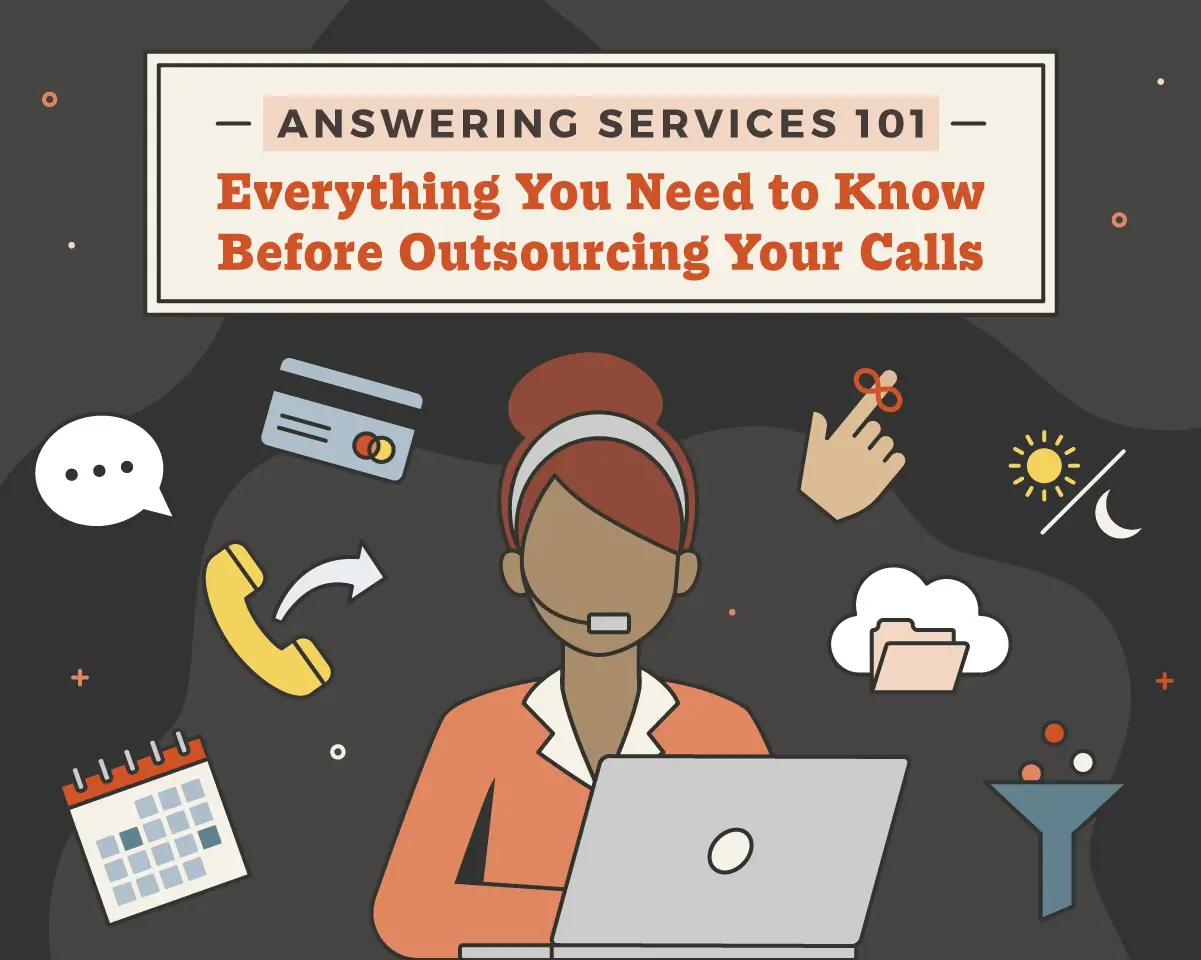Call Handling: Definition, Benefits, and Best Practices

Call handling is often the litmus test for your business’s customer service. Done right, it can skyrocket your customer satisfaction scores and, in turn, your bottom line. But when mishandled, it could lead to a viral social media rant that no business can afford.
Call handling is a critical skill for providing great customer service and growing your business. Let’s explore what exactly call handling is, why it matters, and actionable best practices to turn phone call conversions into sales opportunities.
What is call handling?
Call handling is how businesses and call centers manage inbound and outbound phone calls. It starts the moment the phone rings and continues to the end of the conversation.
Proper call handling consists of:
- Answering calls promptly
- Assessing callers' needs
- Providing accurate information
- Communicating effectively with the caller
- Resolving issues in a timely manner
- Handling call transfers and hold times
- Logging relevant call information for future reference or reporting
Think of call handling as the nerve center of your customer service efforts. It’s where your team’s soft skills converge with your clients’ expectations. At its core, it comes down to managing calls with efficiency, enthusiasm, and effectiveness. An exceptional call-handling experience can resolve issues quickly and potentially transform disgruntled customers into brand evangelists.

How does call handling work?
Call handling involves a variety of steps and technologies to ensure calls are routed to the appropriate representatives, handled efficiently, and documented accurately.
There is no one-size-fits-all approach. Different situations warrant different call handling based on the callers’ needs:
- In internal business environments, call handling aims to improve customer service and efficiency, using features like call forwarding, IVR, and conference calling.
- In call centers, the focus is on managing large volumes of calls, with an emphasis on queue management and rapid response.
- In emergency services, the priority is to accurately route calls to dispatch as quickly as possible, with systems designed for prioritization and rapid information collection.
Key components of call handling include:
Call handling can be managed in-house or through outsourced services like Smith.ai. Our virtual receptionists can help businesses avoid missing leads, extend operating hours, improve customer service, and support in-house call handling during seasonal or peak periods.
Inbound vs. outbound call handling
When it comes to handling calls, there are two main types: inbound and outbound. The primary difference between the two lies in who initiates the call.
Inbound call handling involves receiving calls from current or potential customers seeking assistance, information, or service. These types of calls often include:
- Customer service
- Technical support
- Sales inquiries
- Complaints
- Billing and payment
- General company information
Outbound calls are made by agents or sales representatives to customers or prospects. These calls are usually for:
- Sales
- Lead generation
- Customer follow-up
- Appointment scheduling
- Telemarketing
- Market research
Benefits of effective call handling
Incorporating effective call handling can benefit an organization in the following ways:
- Improves customer satisfaction: When calls are handled properly, customers feel heard and valued. They're more likely to be satisfied with the service and develop a positive impression of your company.
- Increases efficiency: By streamlining the call-handling process, companies can handle more calls with the same resources. This means shorter wait times for customers and improved productivity among staff.
- Provides data-driven insights: An efficient call-handling system can gather and analyze data from phone interactions, revealing customer trends, pain points, and satisfaction levels. These insights help you make informed business decisions to improve service and operations.
- Improves brand reputation: Consistently excellent call handling builds a trustworthy brand image that sets you apart from competitors.
5 call-handling best practices

To provide an exceptional customer experience, focus on these best practices for call handling:
1. Create a proper call-handling script
A call script serves as a safety net, guiding your agents through various customer interactions and ensuring a consistent experience. Agents should personalize conversations with customers, speaking naturally to build rapport.
Smith.ai’s virtual receptionists use a personalized approach that ensures your clients feel heard, understood, and cared for even when they follow a call script.
2. Utilize intelligent call routing
An intelligent call routing system distributes calls to the best available agent for that specific customer. It considers factors like agent skillset, experience, and current workload to match customers with the right support person. Intelligent routing leads to higher first call resolution rates and improved customer satisfaction.
3. Measure performance
If you want to improve, you need to analyze how your team is performing. Establish key performance indicators (KPIs) like first call resolution (FCR) rate, average call handling time (AHT), and customer satisfaction (CSAT) scores. Analyze the data to uncover areas for improvement in call routing, agent training, call scripts, and more.
4. Use call-handling software
Call-handling software integrates call routing, queuing, monitoring, and reporting capabilities in one place. It also provides a unified view of customer data from your CRM platform, so agents have context for every call.
Smith.ai integrates with your favorite call-handling solutions, like Dialpad, Nextiva, and RingCentral, to provide a top-notch customer experience.
5. Prioritize ongoing training and development
Ongoing training ensures your team stays up-to-date with best practices and continuously develops their call-handling skills. Use call monitoring to review customer interactions and provide feedback on soft skills like friendliness, empathy, and de-escalation. Well-trained agents feel more confident and capable in their roles, which translates to superior call handling and customer service.
Improve call handling with Smith.ai
With the help of virtual receptionists from Smith.ai, you can take your call handling to the next level. Our 24/7 virtual receptionists are trained to deliver amazing experiences for your customers while integrating with your existing tools and processes. Benefits include cost savings, scalability, increased productivity for your team, round-the-clock availability, and an improved customer experience from highly trained professionals representing your brand.
Focus on growing your business and leave call handling to the professionals. Schedule a consultation to discuss how we can tailor our services to meet your business needs and enhance your customer service.
Related Posts

















.svg)
